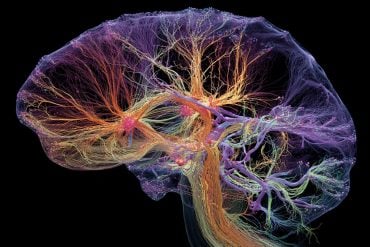Summary: Researchers have identified a new genetic cause of hereditary optic atrophy—a condition that leads to gradual vision loss—by discovering a previously unknown mutation in the PPIB gene. This gene helps proteins fold properly and ensures healthy mitochondrial function, both of which are disrupted in affected individuals.
The mutation was first detected in a large Austrian family and later confirmed in eight additional families worldwide. The findings open the door for improved genetic diagnosis and targeted counseling for patients with unexplained vision loss.
Key Facts:
- New Gene Identified: The PPIB gene mutation is a newly discovered cause of hereditary optic atrophy.
- Mitochondrial Dysfunction: The mutation disrupts mitochondrial function, a hallmark of optic nerve degeneration.
- Diagnostic Impact: The discovery could help diagnose the 60% of optic atrophy cases with unknown genetic origins.
Source: University of Vienna
A research team from the Medical University of Vienna and the Medical University of Graz has discovered a previously unknown genetic cause of hereditary optic atrophy, a degenerative disease of the optic nerve associated with gradual loss of vision.
The results, currently published in the journal Genetics in Medicine, open up new possibilities for the genetic diagnosis of this disease and provide important approaches for future research into the underlying disease mechanisms.

The starting point for the research was the genetic examination of a large Austrian family in which seven individuals across three generations suffered from optic atrophy. Genome-wide sequencing revealed a previously undescribed variant in the PPIB gene (peptidylprolyl isomerase B).
This gene contains the blueprint for an enzyme that helps proteins in the body to adopt their correct structure and breaks down proteins with faulty structures.
In cultured cells from affected individuals, the research team showed that this gene variant impairs the function of mitochondria – the “power plants” of cells. Impaired mitochondrial function is detectable in most known forms of hereditary optic atrophy. By analysing archived genome data, a total of twelve additional affected individuals carrying the same genetic mutation were identified in eight other families.
“We have thus succeeded in describing the PPIB gene as a new optic atrophy gene,” says study leader Wolfgang M. Schmidt from the Center for Anatomy and Cell Biology at MedUni Vienna, summarising the results of the research.
“The identification of this genetic variant creates the possibility of a genetic diagnosis, which has been lacking in many cases,” adds co-study leader Thomas P. Georgi from the Department of Ophthalmology at Med Uni Graz.
This is important in order to be able to provide targeted advice to affected families and tailor medical care to the individual needs of those affected.
60 percent of those affected without a genetic diagnosis
Optic atrophy is a degenerative disease of the optic nerve that leads to gradual damage to the retinal ganglion cells – the nerve cells that transmit visual signals from the retina to the brain. The first symptoms are usually reduced visual acuity, impaired colour perception or central visual field defects.
The disease can be inherited; around 20 forms of optic atrophy are currently known. Most variants involve a disturbance of mitochondrial function. Despite advances in genetic diagnostics, the exact genetic cause remains unclear in around 60 percent of those affected.
This study – a collaboration between the Center for Anatomy and Cell Biology at MedUni Vienna, the Department of Ophthalmology and Optometry at MedUni Vienna, the Center for Cancer Research at MedUni Vienna and the University Eye Clinic at MedUni Graz – has now filled this gap with regard to the PPIB gene.
Future studies will clarify how exactly the PPIB variant influences cell metabolism and whether further genetic changes in this gene are associated with optic atrophy.
Key Questions Answered:
A: They found a previously unknown mutation in the PPIB gene linked to hereditary optic atrophy, expanding the known genetic causes of this vision disorder.
A: It disrupts protein folding and damages mitochondrial function, leading to progressive degeneration of optic nerve cells responsible for transmitting visual information to the brain.
A: It provides a long-sought genetic explanation for many unsolved optic atrophy cases, allowing for earlier diagnosis, personalized care, and improved family counseling.
About this genetics and visual neuroscience research news
Author: Karin Kirschbichler
Source: University of Vienna
Contact: Karin Kirschbichler – University of Vienna
Image: The image is credited to Neuroscience News
Original Research: Open access.
“A recurrent missense variant in the PPIB gene encoding peptidylprolyl isomerase B underlies adult-onset autosomal dominant optic atrophy” by Wolfgang M. Schmidt et al. Genetics in Medicine
Abstract
A recurrent missense variant in the PPIB gene encoding peptidylprolyl isomerase B underlies adult-onset autosomal dominant optic atrophy
Purpose
Hereditary optic atrophy (OA) represents one of the leading causes of blindness. A relatively large number of genes, many of which are implicated in mitochondrial function, are known to be involved in OA. For many affected individuals, however, a genetic cause still cannot be identified.
Methods
In large pedigree and additional families, exome sequencing (ES) was used to identify a genetic cause in individuals with so far genetically unresolved OA. Subsequently, mitochondrial function was studied in cultured dermal fibroblasts.
Results
ES revealed a heterozygous missense variant in PPIB [NM_000942.5:c.538C>T p.(Arg180Trp)], encoding peptidylprolyl isomerase B, which segregated with clinically isolated OA in 19 individuals from 9 families. PPIB-associated OA involves an insidious reduction in visual acuity, central scotoma and inner retinal layer thinning consistent with other autosomal dominant OAs. Age of symptom onset was mostly in adulthood (median: 36 years), and severity of clinical manifestation was variable. Patient-derived fibroblasts revealed altered mitochondrial morphology as well as subtle respiratory chain defects.
Conclusions
The PPIB variant segregates with OA, which might be caused by compromised mitochondrial function. While future studies are needed to study the exact pathomechanistic role of PPIB, insights from this work broaden the knowledge of genes implicated in autosomal dominant OA.






